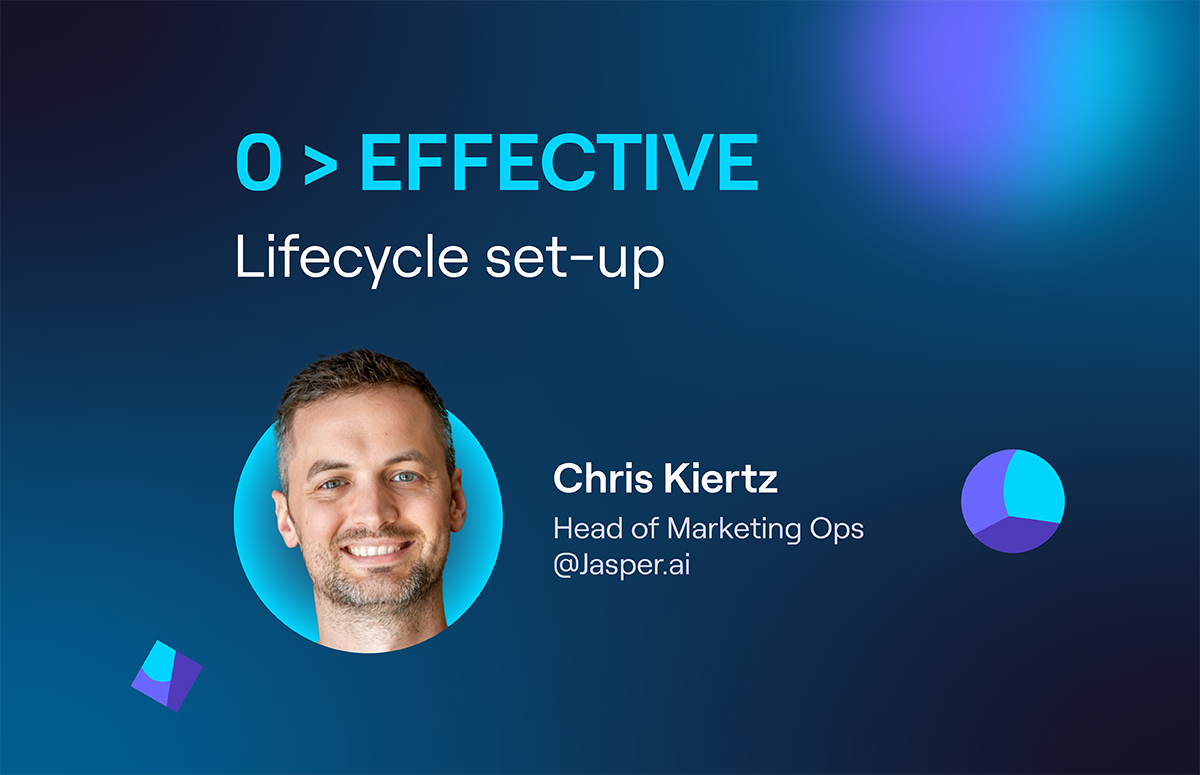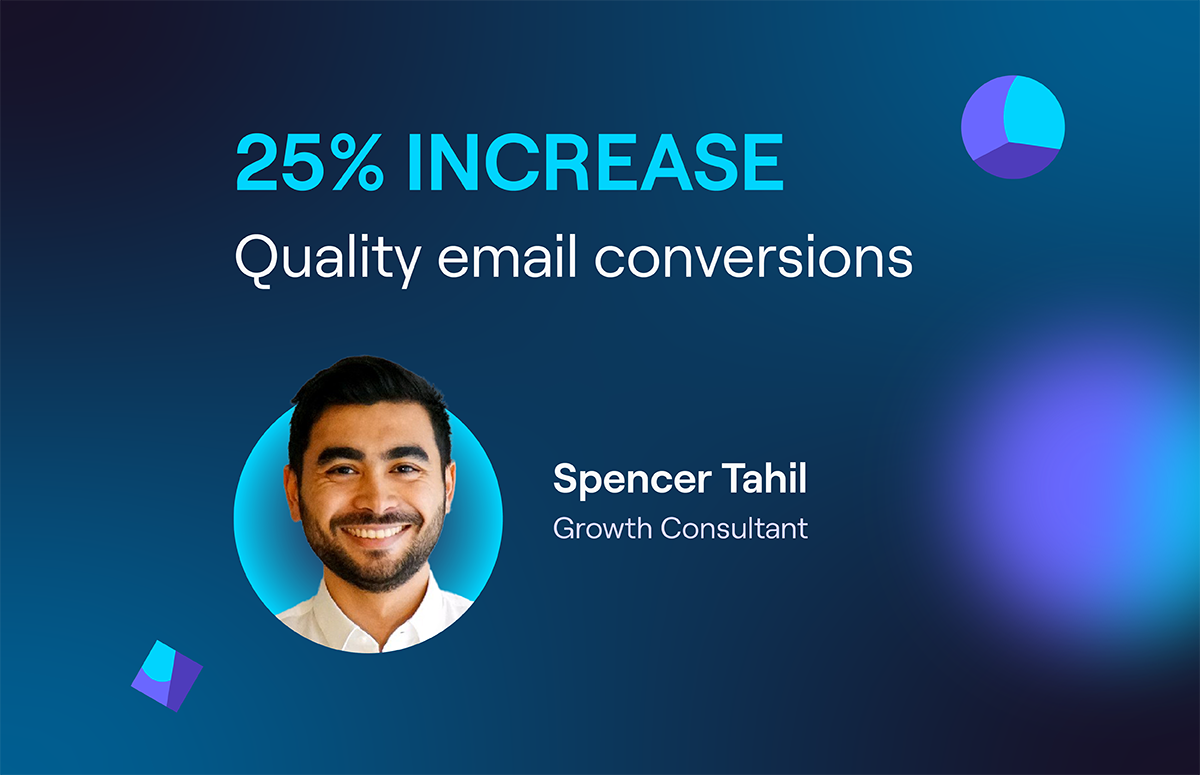FIX YOUR FUNNEL PLAYBOOK
Data-backed ABM optimisations
ABM should be a surefire way to fill the pipeline with larger, better-quality deals, right?
Not always. Especially without the right data.
Here's how KC Chan optimised Gravitee's ABM strategy by giving the correct data on targeting, accounts and activities to ensure they were chasing and converting the right targets.
Industry and company size
-
200 employees
-
IT Technology and Services
Funnel stage
-
MQL to SQO
Playbook impact
-
Effective and scalable ABM plays
PLAYBOOK HOST

KC Chan
MarOps & RevOps Leader
RECOMMENDED FOR
Let's jump in 👇🏻
💡 What was the problem?
When it comes to account-based marketing, stakeholders often pick the top high-intent accounts to target at the start of the quarter.
Yet, in many cases, this is not done strategically or based on enough evidence. As KC Chan shared:
“I’ve found that reps often put their fingers in the air and pick an account from their top ten high intent account list. They spend a lot of time on cold emails and outreach and do a lot of hard work, with little momentum to be shown.”
In KC’s experience, nine times out of ten, this encourages a BDR to send out several sequences on LinkedIn, emails or cold calling.
Here, they’re doing a lot of work but not making much of an impact, as this strategy and approach is not dynamic enough.
💡 Understanding which accounts to target
KC recommends working with sales reps and utilising their insights to pick the top 20 high-intent accounts.
He also uses business intelligence tools to provide the marketing team with insights and information about these target accounts, including their company size, industry, and key decision-makers. As he explained:
“We include intel from tools like Cognism and AI functionality from HubSpot.”
AI functionality allows companies to define their ICP and identify good-fit target accounts.
Through predictive machine learning algorithms, each company and each account is allocated a predictive closing percentage score, which determines the probability that open contracts will close within 90 days through a likelihood-to-close score.
Then, the contact priority feature in HubSpot ranks contacts into tiers based on this score, segmenting these contacts into very high, high, medium, low and closed won.
This is then enriched with inputs from marketing to understand which companies have a strong intent score.
Tools in HubSpot also help analyse historical data patterns and understand which companies, industries and deal pattern combinations have the highest deal closing percentage.
Every month, KC and his team refresh these lists in particular regions to create an audit list and then work with a rep for that specific region to define which accounts show the most promising movement. As KC said:
“That way, you aren’t just using business intel apps or putting your finger in the air and deciding on intuition, but instead, you’re combining a few things to make a well-educated guess. This encourages a learn fast, grow fast mentality.”
💡 Choosing the right audience to target
Once an account is chosen, KC then creates an audience list to identify which people they should target:
“With some automation, we adjust all the lists in HubSpot; that list then supplies and is integrated to our paid search campaigns in LinkedIn, so that dynamic audience is linked to that target account.”
With the audience lists and functionality in HubSpot and LinkedIn, he can re-target LinkedIn ads and email campaigns to different stakeholders within the company in the middle of the funnel and reach as many buying committee members as possible.
💡 Experimentation and optimisation
In the first couple of weeks, KC and his team will run a couple of experiments to forecast one or two message variants to understand which strategies and messaging work from a holistic data perspective. This is then fed back to the marketing rep.
They will test one or two message elements through A/B testing to understand if a particular variant has a higher click-through rate or view time. As he explained:
“We try to encourage different behaviour, so we don’t just look at clicks but also video or content consumption.”
KC also uses HubSpot sequence to track outreach emails and understand which ideas have a high click-through rate:
“That way, rather than reaching the end of the quarter after sending out 200 emails and just deciding the campaign hasn’t worked, we can give live updates from an operations perspective and utilise data to understand which particular experiments have worked. Then, we can adjust that approach and iterate continuously.”
The trick is to make everything as personalised as possible, from ads to email sequences and video assets, focusing on the customer’s industry, pain points, and persona.
KC links the deal stage data in HubSpot so stakeholders know which companies are in each pipeline stage. Reps can then gain a more detailed understanding of what’s happening at an account level.
Here, the exit point is normally when the prospect books a consultation or replies to an email, but the exit point will differ depending on the industry.
This then moves the prospect into the next stage of the funnel so that Marketing Ops can define and break down the success of each of those stages.
💡 What were the results?
Using a single-view ABM tool and having all the relevant marketing and sales data in a single place allows the senior sales reps to have a better and more informed conversation with the BDR or Account Executive surrounding the overview of the ABM play.
They can see the metrics they’re interested in, including the time since contact and the next activity lined up, which saves the senior sales reps time and improves visibility.
From a deal velocity perspective, engaging key decision makers and nurturing these accounts with personalised content also massively reduced the time from deal creation to the third and fourth deal stages.
Choosing the right accounts to target, backed by data, improved the likelihood of conversion, whilst A/B testing different variants ensured that the correct adjustments were made throughout this process. As KC shared:
“To sum up, by using intelligence tools and an optimised ABM approach, we can be a bit more clever and strategic and grow a bit faster.”
.png)

